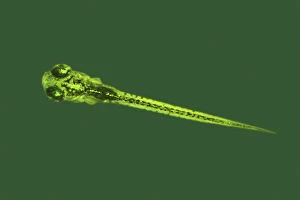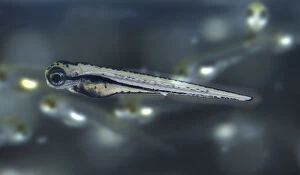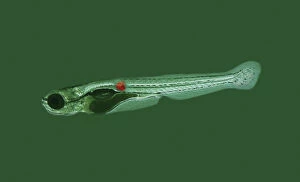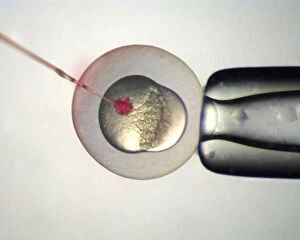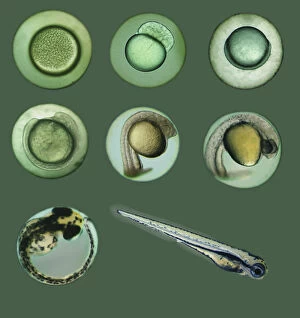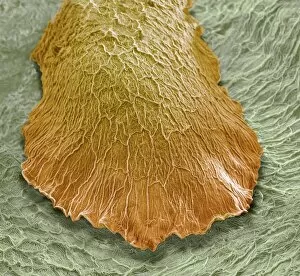Zebrafish Collection
Zebrafish, scientifically known as Danio rerio, are small freshwater fish native to South Asia
For sale as Licensed Images
Choose your image, Select your licence and Download the media
Zebrafish, scientifically known as Danio rerio, are small freshwater fish native to South Asia. Their distinctive black and white striped skin resembles that of a zebra, hence their name. These captivating creatures have become a popular model organism in scientific research due to their unique characteristics. The intricate patterns on zebrafish skin have fascinated scientists for years. Using scanning electron microscopy (SEM), researchers have been able to capture the mesmerizing details of these stripes up close. Picture No. 12479759 showcases the intricate arrangement of pigments on their scales, creating an optical illusion that helps them blend into their surroundings. In addition to studying adult zebrafish, researchers also investigate the development stages of these fascinating creatures using SEM imaging techniques. Picture No. 12479758 provides a glimpse into the microscopic world of young zebrafish embryos with their delicate structures taking shape. Pictures No. 12479757 and No. 12479766 reveal the incredible transformation from embryo to fully formed juvenile zebrafish through various developmental stages captured by SEM imaging technology. Further exploration reveals astonishing images like Picture No. 12479762 and No. 12479764 where scientists study specific organs or tissues within zebrafish specimens at high magnification levels using SEM techniques. Picture No. 12479761 and No. 12479760 showcase the intricate network of blood vessels that run beneath the transparent skin of adult zebrafish, enabling researchers to gain insights into cardiovascular development and diseases affecting humans. Not limited solely to internal structures, SEM has also allowed scientists to examine external features such as fins and gills in unprecedented detail as depicted in Picture No. 12479755 and No. 1247953 respectively. As we delve deeper into understanding this remarkable species' biology through advanced imaging technologies like SEM, we unlock valuable knowledge about genetic disorders, regeneration capabilities, neuroscience research applications - all contributing to advancements in human health and well-being.



